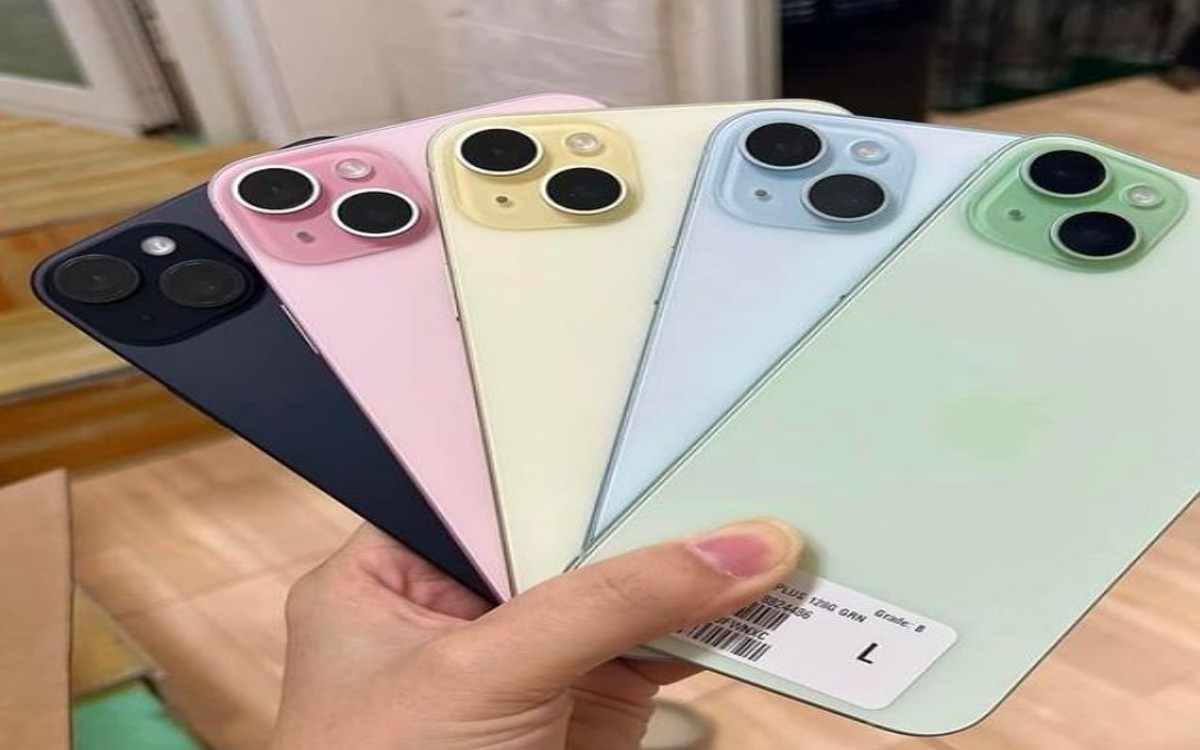
Apple’s annual iPhone launch is one of the most anticipated events in the tech world. With each new release, Apple introduces groundbreaking technologies, improved designs, and enhanced user experiences. However, for many consumers, it’s not just about the latest model; they often look at what happens to older iPhone models when a new one comes out. The iPhone 16 launch is no different, and it has had a significant impact on the prices of the iPhone 15 and iPhone 14. This article explores the dynamics of iPhone pricing, the reasons behind the price drops, and the larger implications for consumers.
The Launch of iPhone 16: An Overview
The iPhone 16, the latest in Apple’s iconic lineup, represents a continuation of the company’s tradition of innovation. Each new iteration brings with it technological upgrades, refined features, and improvements that set it apart from previous models. The iPhone 16 is no different, boasting a slew of advancements:
- Processor and Performance: The iPhone 16 is equipped with Apple’s latest A18 Bionic chip, a leap forward in terms of processing power and energy efficiency. It offers better multitasking, faster graphics rendering, and improved artificial intelligence capabilities. This makes the iPhone 16 a perfect device for users who rely on their phone for gaming, video editing, and other resource-heavy tasks.
- Camera Enhancements: Every year, Apple improves its camera systems, and the iPhone 16 is no exception. The new iPhone sports a more advanced set of lenses and sensors, further improving low-light photography, depth perception, and video stabilization. These enhancements make the iPhone 16 an attractive option for photographers and content creators.
- Display and Design: With a nearly bezel-less OLED display and improved refresh rates, the iPhone 16 delivers a smoother, more immersive experience. The design remains sleek and elegant, building on the signature Apple aesthetic that combines form and function.
These innovations undoubtedly appeal to Apple’s loyal customer base, but they also trigger a shift in the market for older iPhone models, including the iPhone 15 and iPhone 14.
The Tradition of iPhone Price Drops After New Launches
Apple has established a well-known pattern when it comes to pricing its products. Whenever a new iPhone is launched, older models experience a price drop. This strategy helps Apple in several ways:
- Clearing Inventory: Apple aims to clear its inventory of older models when a new iPhone hits the market. Price drops encourage consumers who might have been on the fence about purchasing a newer iPhone to finally make a decision.
- Differentiation: By lowering the prices of older models, Apple provides different price tiers for customers. This ensures that the company can cater to a wider audience, from high-end buyers who prefer the latest model to budget-conscious consumers looking for value.
- Competing in Emerging Markets: Price reductions on older models make iPhones more affordable for consumers in emerging markets, where the latest iPhone might be out of reach for many due to high import taxes or lower average income levels.
- Sustaining Demand for the Ecosystem: Apple is known for creating a tightly integrated ecosystem of devices and services, and older iPhones still run the latest iOS updates. Reducing the price of older models helps Apple keep more people within its ecosystem, where they are likely to spend on apps, services, and accessories.
This consistent approach leads us to the current scenario, where the iPhone 15 and iPhone 14 have seen price reductions following the iPhone 16 launch.
Price Drop of iPhone 15: An Analysis
Upon the release of the iPhone 16, the iPhone 15, which was Apple’s flagship device just a year ago, experienced a noticeable price drop. On average, the iPhone 15 saw reductions of anywhere from 10-20%, depending on the region and retailer. This price cut follows Apple’s typical strategy, but several factors influence how steep these reductions are:
- Inventory Levels: Retailers who still hold large stocks of the iPhone 15 are more likely to offer steeper discounts to quickly clear their inventory. The longer they hold onto these units, the more value they lose as consumers turn their attention to the iPhone 16.
- Customer Demand: Despite the iPhone 16’s release, the iPhone 15 remains a highly capable device, with cutting-edge features that still stand out in the market. Many consumers see the iPhone 15 as a better value proposition, especially after its price drop. This sustained demand can moderate the depth of price cuts.
- Regional Variations: In some markets, such as the United States and Europe, price cuts might be more aggressive compared to countries like India or Brazil, where import duties and other factors result in higher overall prices for smartphones.
- Trade-In Programs: Apple and various retailers offer trade-in programs, which provide consumers with additional savings when they trade in an older device for the iPhone 15. These programs effectively increase the perceived discount on the iPhone 15, further enticing buyers.
While the iPhone 15 price drop is significant, it’s not as drastic as what happens to models that are two or more years old, such as the iPhone 14.
Price Drop of iPhone 14: A Closer Look
The iPhone 14, now two generations behind the latest model, has seen even more substantial price reductions. In some cases, the iPhone 14 is available at a 20-30% discount compared to its original launch price. This is due to several factors:
- Technological Gap: With the iPhone 16 and iPhone 15 boasting significant technological advancements, the iPhone 14 is now perceived as somewhat dated. While still powerful and capable, it lacks the cutting-edge features of the newer models, leading to steeper price cuts.
- Supply Chain Dynamics: Manufacturers and retailers are keen to clear their stock of older models like the iPhone 14 to make room for newer inventory. This leads to aggressive discounting, especially during sales events such as Black Friday or holiday shopping periods.
- Carrier Deals: Mobile carriers play a significant role in price reductions for older iPhone models. Carriers often bundle older iPhones with attractive contracts, offering the devices at a lower upfront cost or even for free with certain long-term plans. These deals make the iPhone 14 a compelling option for consumers who prioritize affordability over having the latest model.
- Second-Hand Market: The second-hand and refurbished market also contributes to price drops for older iPhones. As more people upgrade to the iPhone 16, they trade in their older devices, increasing the supply of used iPhone 14s, which further depresses prices.
Overall, the iPhone 14’s price drop makes it an appealing option for consumers who want to enter the Apple ecosystem without paying premium prices. Despite being two generations old, the iPhone 14 remains a highly functional smartphone with access to the latest iOS updates, making it a viable choice for many.
Consumer Response to Price Drops
Consumers generally react positively to price drops on older iPhone models. For many, the new iPhone 16 may be tempting, but it is often the price drop on the previous generation that drives their purchase decision. Several groups benefit from these reductions:
- Budget-Conscious Consumers: Not everyone is willing or able to spend top dollar on the latest iPhone. Price reductions on the iPhone 15 and iPhone 14 provide more affordable options for consumers who want a premium smartphone experience without the premium price tag.
- Late Adopters: Some consumers prefer not to be early adopters of new technology, opting instead to wait until the bugs and issues of a new model are ironed out. For them, the iPhone 15 or iPhone 14, now at a reduced price, represents a tried-and-tested option with all the benefits of Apple’s ecosystem.
- Parents and Gift Givers: Price drops on older iPhones often coincide with the holiday shopping season, making them attractive gifts. Parents looking to buy their child’s first smartphone or gift-givers looking for a reliable device often turn to older models like the iPhone 14 due to the lower price.
- Emerging Markets: In countries where smartphone affordability is a key concern, the price reductions on older iPhones open the door for more consumers to enter the Apple ecosystem. In these regions, the iPhone 14 or iPhone 15, post-price-drop, offers a competitive alternative to premium Android devices.
Retailer and Carrier Strategies
Retailers and carriers play a crucial role in shaping the pricing landscape for older iPhone models after the launch of a new one. Each year, they adjust their strategies to align with Apple’s pricing structure and the demands of their customers.
- Retailer Discounts: Major retailers like Best Buy, Amazon, and Walmart often run promotions and discounts on older iPhones following the release of a new model. These discounts may be temporary and timed to coincide with shopping events like Black Friday or Cyber Monday. Retailers also offer financing options, making it easier for customers to purchase older models.
- Carrier Bundles: Mobile carriers are known for offering discounted iPhones when bundled with service contracts. For example, a carrier might offer the iPhone 14 for free if the customer signs up for a 24-month contract. These offers are particularly appealing to consumers who prioritize lower upfront costs.
- Trade-In Programs: Both Apple and third-party retailers often encourage consumers to trade in their older devices. The trade-in value is then applied as a discount toward the purchase of a new iPhone, effectively reducing the price of the iPhone 15 or iPhone 14.






